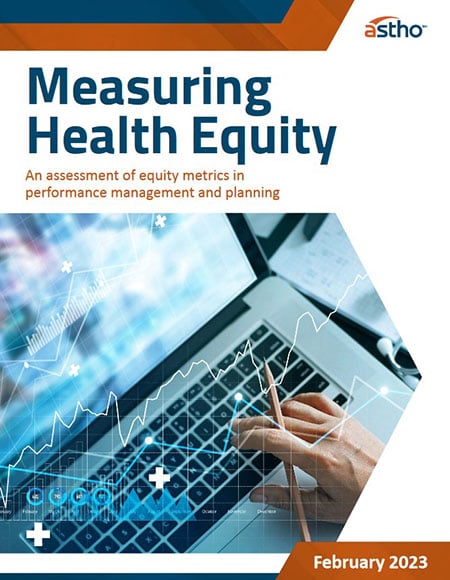Measuring Health Equity for Planning and Performance Improvement
February 22, 2023 | Heidi Westermann, Melissa Lewis
 With support from CDC’s Center for State, Tribal, Local, and Territorial Support, in 2021, ASTHO initiated a health equity metric assessment to strengthen the evidence base for measuring health equity by identifying and collecting known and emerging metrics that support health equity strategies and monitor advancements toward health equity.
With support from CDC’s Center for State, Tribal, Local, and Territorial Support, in 2021, ASTHO initiated a health equity metric assessment to strengthen the evidence base for measuring health equity by identifying and collecting known and emerging metrics that support health equity strategies and monitor advancements toward health equity.
To better understand the state of the field, ASTHO conducted an environmental scan that looked at state and territorial planning documents and national frameworks. As the scan revealed wide variation in how jurisdictions use equity-related terms and limited established metrics, ASTHO convened an advisory group to help identify resources and guide the work’s direction.
Participating health agencies told ASTHO about their challenges in developing health equity standards and measures, including obstacles related to the underlying culture and the change management required to evolve toward a more equitable public health system. The agencies described both data limitation challenges and workforce capacity and communication challenges. This report summarizes these challenges, proposes incremental recommendations, and acknowledges the need for states and territories to apply both health equity and performance management strategies to develop health equity standards and measures.
ASTHO recommends:
- Addressing data limitations and being transparent about remaining gaps.
- Building workforce capacity to recognize and address complex concepts and evolving needs through strategic skills and structural, transitional, and transformational change.
- Employing inclusive planning and performance management promising practices to engage stakeholders to develop meaningful, community-driven metrics.
- Committing to human-centered communication and community engagement through data visualization, storytelling, and trusted messengers.
While this assessment confirmed that states and territories are interested in a list of nationally vetted common health equity metrics, the findings demonstrate a need for true equity engagement between communities and governmental public health leading to a paradigm shift in how we partner to improve health, prevent disease, and eliminate disparities.
In addition, given that this assessment began before the COVID-19 pandemic, it does not fully account for the ongoing change associated with dedicated COVID disparities funding, investments in data and infrastructure, and the pandemic’s complex mental, physical, political, social, and economic impacts. As a result, several jurisdictions may need to adapt strategies already underway that are aligned with ASTHO’s recommendations. Health agencies should also consider their level of influence and authority and which partners they would engage to implement these strategies; this may vary by jurisdiction and governance structure. ASTHO will continue to strategize ways to improve and formalize health equity metrics to help public health agencies better serve their communities.